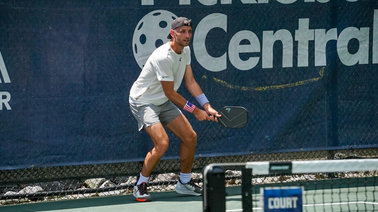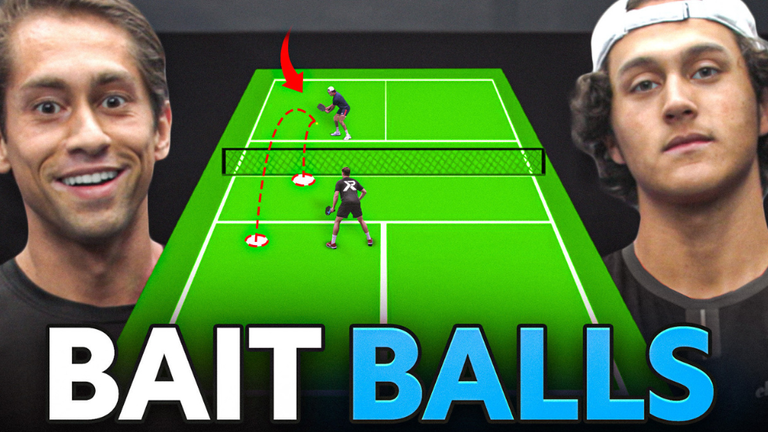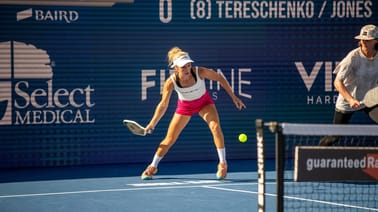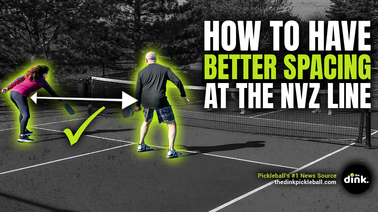
Repeated failure to execute a simple pickleball shot, like the serve, can snowball into a crippling case of performance anxiety. Here's how to conquer the yips and hit the court stress-free.
Even writing the word is dangerous. Please don’t say it aloud. In golf, the dreaded Y word is like saying Beetlejuice. It’s never to be uttered, not even once.
That said, if you have ever had them—like I have—it’s worth understanding how they got there and what you can do to play through the pain and enjoy pickleball stress-free again.
What are the Yips?
The yips are the inability to execute a relatively easy shot in a sport, especially when you have time to think about it. This time dimension is why coaches attempt to ice kickers in football with a strategic timeout, which often works.
If you want to play a sport at the highest level, you need to keep your thinking mind out of it. Flow state is only achieved when internal mechanics are automatic and the athlete focuses solely on what is happening externally.
Golf is the most common sport in which the yips take hold. While every golf shot is susceptible to the yips, they tend to infect the slower-speed shots the most, such as putts and chips.
Famously, the greatest golfer of all time, Tiger Woods, allegedly had the yips around the green during a span in 2015, and his rival Phil Mickelson helped him overcome them.
In pickleball, the yips most commonly affect the serve, as it's the only relatively easy shot that one has a lot of time to ponder. One top-ranked pro made headlines for a serious case of the service yips in 2024 for a few painful MLP matches.
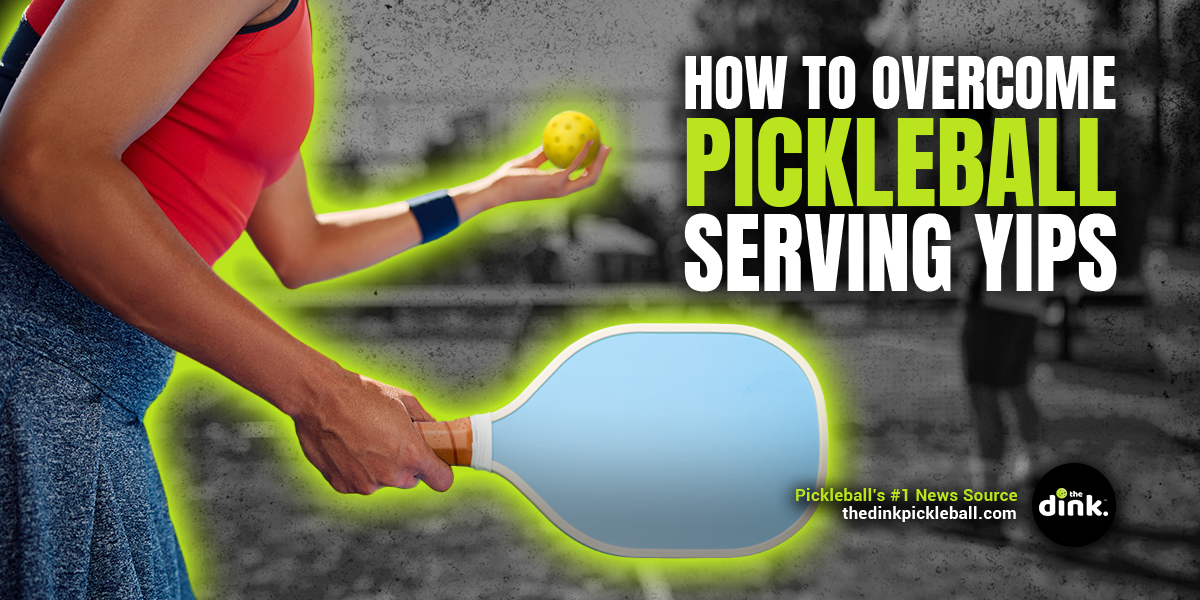
That said, the yips are much more rampant at the amateur level.
I have taught players who have switched to a backhand serve permanently due to the yips. The condition can sometimes last for months and impact not only one’s performance but also a player’s enjoyment of the sport.
What Causes the Yips?
According to the Mayo Clinic:
It was once thought that the yips were always associated with performance anxiety. However, it now appears that some people have the yips due to a neurological condition affecting specific muscles. This condition is known as focal dystonia.
The yips are involuntary wrist spasms that occur most commonly when golfers are trying to putt. However, the yips also can affect people who play other sports — such as cricket, darts, and baseball.
And now: Pickleball.
The yips, in my experience, are rooted in fear. Sometimes, players don’t realize it's fear, but at its core, it's a fear of embarrassment, letting one’s team down, or never being able to serve well again.
This fear manifests in an involuntary lack of coordination of the kinetic chain. The hips, shoulders, elbow, and wrist don’t coordinate, and the serve goes anywhere but in.
My Case of the Yips
The yips often come from a singular event that begins the cycle.
Many years ago, when I was just learning the game, I was traveling in Florida and found some indoor open play.
I didn’t typically play indoors. I decided to jump right into playing without warming up. I went to serve this weird orange indoor ball and launched it straight at the older player at the net.
I was mortified. I apologized profusely. I didn’t know how I could have “Nasty Nelsoned” the guy; they didn’t believe it was an accident.
My serve was gone for two weeks.
How to Conquer the Yips
Develop a Backup Serve
Before we work through the yips, we need a relatively simple backup serve that does not use the same kinetic chain as your primary serve.
Though I stress having a backup serve, this is also how some players get stuck with their backup serve as their only serve. So proceed with caution.
The slice serve or screwball is consistently repeatable as a backup serve. Most of your weight is on the front leg, and the wrist is locked at impact. It doesn't have that many moving pieces.
That said, I implore all of you not to give up on your standard serve. This fear must be conquered. The only way around the yips is through the yips.
Prepare to Succeed
Playing pickleball well starts with intentionality and preparation, and that preparation starts with a solid pre-serve routine.
- Your routine should begin by planning the serve and determining how you want the first few shots to go. Who are you hitting your thirds to? Am I trying to drive and crash or slow the game down?
- Be intentional about how you want the point to go. This puts the serve as a means to an end and is no more important than any other shot in the game.
- Finally, develop a physical, repeatable pre-shot routine like a tennis player or a free-throw shooter in basketball: two bounces, looking up at the target, touching the paddle to the ball, etc., before beginning your swing. Make it your own, but do it every time you serve a ball: practice, recreation, or tournament.
As an aside, if you are calling the score, plan to call it, then pause. Many people rush through their serves and call the score in their backswing, which causes many missed serves—yips or no yips.
Trust the Process
Once you have a good rhythm and routine, it is time to take your bucket of balls and practice trusting your serve. This starts by closing your eyes. That’s right, begin trusting your swing explicitly by shutting your eyes. First, at the beginning of your backswing, then longer.
Get to the point that your eyes are closed well after impact, only looking up to see if your serve landed in. Play with it. Have fun with it. Feel the relaxed swing that you can do with your eyes closed.
Visualize Success
Gratitude is one of life's secret weapons. Playing pickleball is fantastic, whether at a tournament or in the park. If you feel any nerves, plan to bask a little in that and just breathe.
Once back on the court with your friends, do your routine and close your eyes for the first portion of your swing to harness that sense of calm and relaxation. Of course, open them casually as you begin your downswing to ensure solid contact.
By closing your eyes in your backswing, you unconsciously tap into your practice session and that trust of your kinetic chain. You stop guiding your swing with mechanical thinking and let go, releasing that tension with a strong exhale into the ball.
The only way to conquer fear is with trust. There is no better way to find trust than to believe you can hit this serve... even with your eyes closed.
Give it a try. Develop a bulletproof service routine. Then crush that serve and conquer the yips once and for all.

John Sanders
John Sanders is a PPR-certified instructor who can be reached at ThePickleProf.com. He helps players navigate their pickleball addiction with weekly tips on etiquette, technique, & injury prevention.
Love Pickleball? Join 100k+ readers for free weekly tips, news & gear deals.
Subscribe to The DinkGet 15% off pickleball gear at Midwest Raquet Sports



